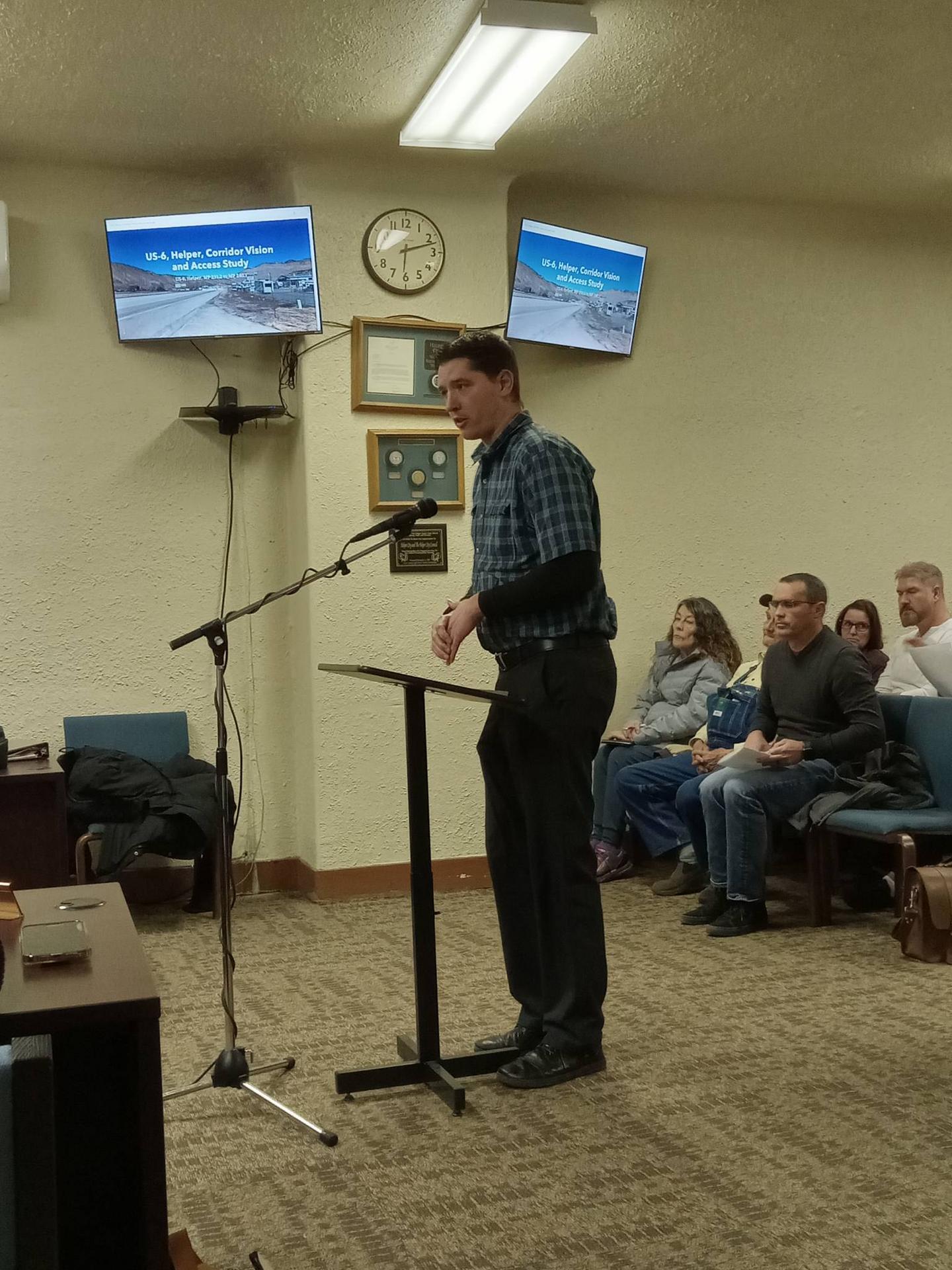Chris Hall, Region 4 Planning Manager with the Utah Department of Transportation (UDOT), visited the Carbon County Commission and the Helper City Council last week to present proposals to improve safety on Highway 6.
Hall was joined by two other UDOT representatives to give in-depth information, which was obtained from the US-6, Helper and Corridor Vision and Access Study. UDOT is reviewing key areas in Utah that are known to cause issues in regard to accidents and traffic flow. They are working to gather information from the community regarding what they would like to see on the roads located in their communities.
A stakeholder group was organized, composed of individuals from the county, Helper and more, bringing them together to create a vision for improved safety and mobility for local, regional and freight travel through corridor access management. Local access needs must also be considered.
UDOT studied crashes that occur in the Carbon Corridor, what type of crashes they are and more. Comparably, US-6 in this area has less crashes than a lot of highways in the state.
However, projected traffic is expected to rise greatly within the coming years. UDOT would like to have a solution in place in order that all can agree on to accommodate the growth and then implement it.
Hall stressed that this is a high-level planning study and that nothing has been decided or funded yet. UDOT simply wished to present what could work, though alternatives will need further study and data to ensure that they are applicable. The first proposal was two roundabouts at the Poplar Street turn-off as well as the Spring Glen turn-off.
Hall stated that data shows that roundabouts have about 90% less accidents than other methods to regulate traffic. A median barrier is also being proposed from Poplar Street to Spring Glen, as the left turns are often where fatal crashes occur.
Traffic signals were also proposed, though Hall stated that traffic signals have 42 conflict points in the area, while the roundabouts have 20. Roundabouts ultimately minimize where vehicles are able to strike each other, he said. The roundabout would be two lanes, the speed can be regulated and there is a U-turn halfway down the median that is also proposed.
Finally, there is also an point for signals. Signals have more crashes involved, but are easier for freight movement. This project is very much in the conceptual stage, Hall reminded all, stating that there is about a seven to 10 year window for funding to even be available, though it could take longer.
At the commission meeting, Commission Chair Tony Martines stated that UDOT has definitely identified the correct areas, though he proposed that an overpass also be considered in the plans. Commissioner Larry Jensen acknowledged that UDOT has the right to do what they wish on their highway and that he was grateful that they were engaging the community. He said there are homes and businesses along the highway and that it will affect them all, though as traffic increases, something definitely needs to be done.
The Helper community was very vocal regarding the proposals. First, the council had questions for Hall, such as if freight can function in a roundabout and the possibility of speed reduction before the project begins. In fact, speed reduction happening in the area, very soon, was echoed by many community members that gave public comment.
It was stated that these proposals would not be beneficial for the rural workers in the area, also stating that first responders would have to take longer to reach those that are experiencing an emergency situation.
With many comments in opposition of the proposals, Helper City Mayor Lenise Peterman asked Hall what the next step would be. He stated that it would be having the council review the proposals and access agreement, which would give UDOT access to continue working on options and proposals.
Both the commissioners and the council ultimately tabled approving the agreement, wishing to gather more information and have further meetings to ensure that the decision that is made would benefit the community overall.


